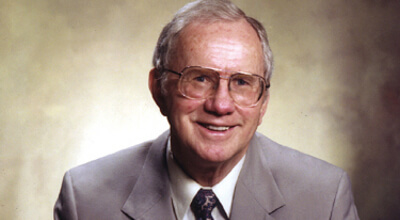Almost 60 years ago, Bob Finley had a vision for indigenous missions that created the most effective missions organization you’ve never heard of
The most dynamic spiritual awakening in church history isn’t occurring in a glittering American stadium, a booming South Korean megachurch or an African metropolis. Each day in China an estimated 30,000 souls choose to follow Christ, continuing a 30-year boom in conversions that has swelled the ranks of Christians in the nation to more than 100 million.
“Christianity is thriving,” says Freddie Sun, China director for Christian Aid Mission (CAM), a ministry based in Charlottesville, Va. “There are now an estimated 150 million Christians, including Catholics and Protestants.”
The reason, says Sun, a Chinese expatriate who still visits his homeland annually, is native believers are spreading the gospel across their vast nation.
The key is not the presence of visiting missionaries or messages by powerful speakers, but house churches led by indigenous missionaries who arose after Mao Tse-Tung seized control of the Chinese government in 1949. A communist dictator, Mao immediately expelled 6,000 foreign missionaries, which Sun says helped water gospel seeds planted by pioneers such as Hudson Taylor and Lottie Moon.
This kind of impressive result represents the future of missions, says CAM’s 88-year-old founder, Bob Finley. Though a soft-spoken figure, he has provoked considerable controversy over the last 60 years because of his strong opposition to traditional missions. A critic once even labeled him a “heretic.” But Finley believes that, despite CAM’s slower pace, they have made an impact on missions strategy.
“Gradually some of the traditional missions have been willing to acknowledge that maybe we should be willing to help some of these indigenous missions,” he says.
Finley isn’t the first to advocate native believers reach their own countries. Such predecessors as Taylor, founder of the China Inland Mission; Assemblies of God (AG) missionary Melvin Hodges, who in 1953 wrote On the Mission Field: The Indigenous Church; and AG missionary Alice Luce were among proponents who date back two centuries.
Nor is Finley alone in carrying the banner today. Partners International of Spokane, Wash., actually preceded CAM. Gospel for Asia and many other smaller missions agencies—including those based overseas—operate on the same principle.
Finley first went abroad in 1948 as an independent evangelical missionary, though he came from a Southern Baptist background, devoted to evangelizing China. After Mao banned outsiders the next year, Finley came to see God’s hand behind this action, since it ensured that the Chinese would mature into soul winners.

Reflecting on the experience, Finley saw how traditional missions followed a free-enterprise business model, with each organization acting independently and spreading division via competitiveness and doctrinal disputes.
“I came back and started telling people that, and I thought I was going to get burned at the stake,” he says, chuckling. “The traditional missions didn’t appreciate that. They didn’t want their operations reduced by helping indigenous missions so they violently and strongly opposed what I was teaching.”
The opposition didn’t deter Finley, who spelled out his case in his 2005 book, Reformation in Foreign Missions. Approximately 40,000 copies have been distributed by CAM, which offers it free to supporters and others interested in missions.
Believing he had the answer to more effective worldwide evangelism, Finley organized International Students Inc. in 1953. Now based in Colorado Springs, Colo., the corporation aims to teach international students attending U.S. colleges how to share their faith back home.
After training numerous students to evangelize, Finley launched CAM as a separate ministry in 1970. He wanted to help further the cause by enabling the students who had returned home to multiply indigenous believers. In addition to supporting some 800 ministries and an estimated 80,000 indigenous missionaries, the ministry has helped start hundreds of Bible institutes and training centers that often also serve as churches.

While Finley has many critics, they can’t argue with his evangelical bonafides—he and Billy Graham were the first field evangelists for Youth for Christ. Among his other past associates were healing evangelist Oral Roberts, Full Gospel Business Men’s Fellowship International founder Demos Shakarian, pastor-author A.W. Tozer, Navigators founder Dawson Trotman and Fuller Theological Seminary founder Charles Fuller.
Still, many didn’t agree with Finley’s primary thesis that the biblical model for missions is to train believers outside their native settings and send them back to tell their people about Christ.
He says the first two missionaries, Barnabas and Paul, developed their faith in Jerusalem before spreading the truth in Cyprus and Asia Minor, where they spoke the same Greek language. Likewise, the best missionaries today are those who already know the language, culture and customs of those they are trying to reach, Finley says.
Though he acknowledges that the evangelistic missionary movement of the last 200 years has been the most redemptive force in human history, he also thinks its time has passed. Conventional missions are left over from the 19th century, Finley believes. Western missionaries often exhibit economic disparities between themselves and those they serve, along with superior attitudes, cultural offenses and denominational expansion rooted in a colonial-era philosophy of empire building.
“This is a church tradition that developed in the 19th century, and once you set up a church tradition, you can’t change it,” he says.
Finley also believes sending Americans overseas is a waste of resources. He recalls as an example the farewell dinner he once attended for a missionary whose first-year support was to total $80,000, compared with an average of $1,200 received annually by native missionaries.

SBC International Mission Board President Emeritus Jerry Rankin disagrees with assessing the impact of missions on money alone, pointing out that stewardship isn’t all about money but faithfulness to God’s call. Nor is raising up national workers necessarily the opposite of what the SBC and other denominations do on the field, he says.
The SBC involved 224,000 national workers in theological education last year through extension classes and long-term spiritual training, says Rankin, a charismatic and currently active missions consultant.
“In a sense the philosophy is not contrary,” he says. “It’s not what Western missionaries do [that matters], but how you can multiply and facilitate national workers. Reaching a lost world is going to be completely dependent on indigenous movements of national workers and multiplying workers overseas.”
Rankin also thinks Finley misrepresents traditional missionaries and believes they no longer take an antiquated, patronizing approach. The difference is not whether the missionary is a Westerner or a native, but whether the Holy Spirit’s anointing is on that person’s life, he says.
He notes that the SBC has seen “amazing” church growth—its International Missions Board started 24,000 new churches last year, and Rankin points out that none of them is dependent on a pastor, church planter or American-funded resources.

Even those who applaud CAM’s efforts think its leader overlooks the positives of traditional missions, which they say helps penetrate areas where most of the people don’t believe in Christ.
For example, says Fred Markert—director of the Youth With a Mission (YWAM) Terra Nova Project—it would take hundreds of years to reach India’s 1.2 billion people if evangelism depended solely on the 2 percent of the population that is Christian. He notes there is a similar lack of believers in neighboring Nepal (2 percent), Pakistan (1 percent) and Bangladesh (1 percent).
“God is huge, diverse, creative and expansive,” Markert says. “He has thousands of strategies we haven’t even thought of yet. God’s heart is to reach the lost. Part of those diverse strategies is to have foreigners come to people, as well as natives.”
In addition, thanks to technology, Western culture is already exporting worldly philosophies that are foreign to the cultures importing them. So why shouldn’t Christians follow up with biblically sound teaching from properly trained foreign missionaries, Markert questions.
On a recent visit to Iran, where 70 percent of the population is under 30, Markert observed young people dressed in European styles and listening to Western music stars such as Britney Spears, Rascal Flatts, Metallica and Megadeth. Because people groups worldwide are no longer as culturally insulated or isolated as they used to be, it makes the job of building relationships with nationals easier than it used to be, he says.
Nor are nationals always best for reaching their culture, Markert says. He says that since everyone tends to wear cultural blinders, it takes outsiders with a different perspective to point out a culture’s shortcomings that need to be transformed by the gospel.
“Also, indigenous people who are in a separate people group are not always the best ones to go to their neighbor,” Markert says. “Different unreached people groups have different languages and cultures, and there are other barriers between them as well. Properly trained foreign missionaries don’t carry those historic liabilities.”
New Goals
Two CAM division directors believe wholeheartedly in the ministry’s approach, saying it accomplishes what wouldn’t be possible with foreign missionaries and with more economical operations.
Sun, who spent 10 years in prison for speaking up for his beliefs (his wife served 20 years), says the current communist government in China isn’t as hostile to Christianity as it has been in the past, but it remains an active police state.
Although some Western missions agencies send people in to teach English or perform other social tasks, they have a difficult time implementing evangelism because they are so closely watched..
“In every corner they have monitors,” Sun says. “Basically they can do very little, not even compassion projects. We have homes here. We can say we’re coming back to visit relatives and do sightseeing.”
During annual trips he inspects many of the 146 Bible institutes supported by CAM. They are clandestine visits, with a contact appearing at the airport to whisk him to a location that isn’t widely advertised.
Not only are there no language barriers to this work, but also the costs are minimal, Sun notes. CAM reports spending only a dollar or two a day to support indigenous missionaries there. That is much more cost-effective than a Western agency spending $60,000 to $100,000 a year to send someone overseas, he says.
“With indigenous Christians, it’s very easy, whether it’s Africa, China or Nepal,” Sun says. “Bob has had the vision. He’s always had a burden to help the Chinese and others.”
Rae Burnett, a CAM vice president and director of outreach to Africa, became enamored with the ministry after hearing Finley speak at a Bible study in the 1970s. After taking over African operations in 1993—four years after joining the staff—Burnett lobbied her boss to send her to Africa so she could see native missionaries serving in their context.
“As I read the files, I realized I didn’t think I could make the work adequately known,” says Burnette, who now spends half the year in Africa. “I thought, How can I ask people to give to something I haven’t seen? I asked the Lord to open greater resources of funding and opportunities for me to visit. Eventually that happened.”
One minister she agreed to help because he had already opened his home to orphans now operates a center with 120 children. Another ministry that started seven years ago with five people who were seeking training now has 450 full-time missionaries on the field.
It is those sort of unusual evangelists that drive CAM’s ministry, Finley says. He points to the preachers the mission has supported, such as the late evangelist Greg Tingson, who he says was to the Philippines what Billy Graham was to America; Ukrainian Slavik Radchuk; and the late Bakht Singh of India..
“There’s going to be an explosion of ministries helping indigenous missions,” Finley says of the coming decade. “Eventually I think the churches are going to realize that the way to go in missions work is not the colonial approach, but by getting behind the native believers and helping them.”
Ken Walker, a freelance writer based in Huntington, W.Va., collaborated with Nigerian-born pastor Paul Eguridu on his new book, Prayer Works.
To give to Christian Aid Mission, go to christianlifemissions.com
Learn more about Bob Finley and Christian Aid Mission at finley.charismamag.com







Leave a Comment
You must be logged in to post a comment.